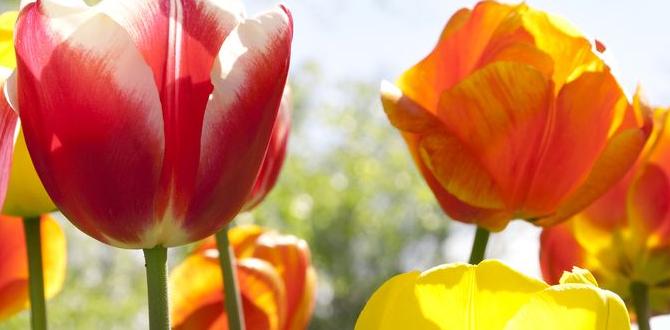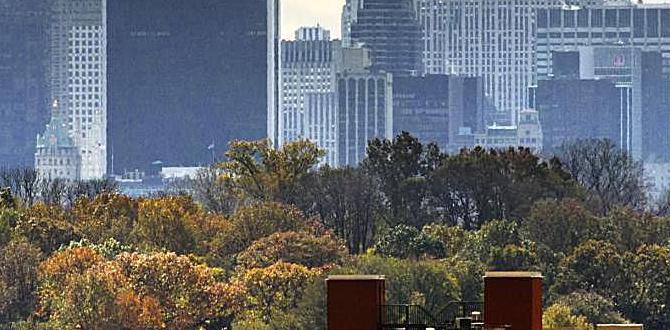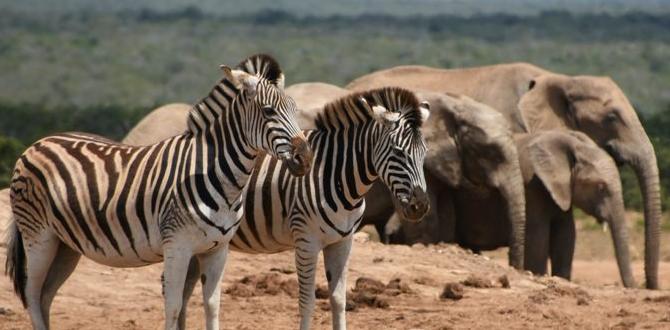Australia solo female travel is achievable and incredibly rewarding! Focus on smart planning, staying connected, trusting your instincts, and embracing the adventure. With these essential tips, you’ll navigate the Land Down Under with confidence, safety, and plenty of excitement.
Dreaming of exploring Australia on your own? It’s a fantastic idea! Many solo female travelers find Australia to be welcoming and remarkably safe. However, navigating a new continent by yourself can bring a few worries. You might wonder about getting around, staying safe, or even just finding the best places to eat. This guide is here to smooth out those bumps. We’ll walk through everything you need to know to plan a solo Australian adventure that’s both thrilling and stress-free. Get ready to feel prepared and excited!
Why Australia is a Top Pick for Solo Female Travelers
Australia consistently ranks high for solo female travelers, and for good reason. Its vast, diverse landscapes offer something for everyone, from sun-drenched beaches and vibrant cities to ancient rainforests and the iconic Outback. What truly sets Australia apart, though, is its infrastructure and general safety. English is the primary language, making communication easy. Public transport in major cities is efficient, and widespread Wi-Fi keeps you connected. Furthermore, Australians are known for their friendly and laid-back nature, often happy to offer help or a friendly chat.
The sheer variety of experiences available also appeals to solo explorers. Whether you’re keen on surfing lessons in Byron Bay, exploring the Great Barrier Reef, hiking in the Blue Mountains, or diving into the culture of Melbourne, Australia caters to every interest. This sense of possibility, combined with a generally safe and accessible environment, makes it an ideal destination for your first solo trip or your next big adventure.
Essential Pre-Trip Planning for Your Australian Adventure
A little preparation goes a long way when you’re traveling solo, especially to a country as large as Australia. Thinking through these key aspects before you leave will ensure a smoother, more enjoyable journey.
Visas and Documentation
First things first, make sure you have the correct visa. Most visitors will need an Electronic Travel Authority (ETA) or a Visitor Visa (subclass 600). You can check your eligibility and apply through the Australian Government’s Department of Home Affairs website. It’s best to apply well in advance to avoid any last-minute stress. Keep digital and physical copies of your passport, visa, and other important documents (like your driver’s license and flight details) separate from the originals. This way, if something is lost or stolen, you still have access to crucial information.
Here’s a quick checklist for your essential documents:
- Passport (with at least six months validity beyond your intended stay)
- Valid Australian Visa (ETA or Visitor Visa)
- Flight Itinerary and Confirmations
- Accommodation Bookings
- Travel Insurance Policy Details
- Driver’s License (if you plan to drive)
- Copies of all important documents (stored separately)
Travel Insurance: Your Safety Net
This one is non-negotiable. Comprehensive travel insurance is vital for solo travelers. It covers unexpected medical emergencies, trip cancellations, lost luggage, and other unforeseen events. Read your policy carefully to understand what’s covered and what’s not. Ensure it includes adequate medical coverage for your planned activities, especially if you’re engaging in adventure sports. Don’t skimp on this; it’s your most important safety net.
Budgeting for Your Trip
Australia can be an expensive destination, so a realistic budget is key. Consider flights, accommodation, food, transportation, activities, and a buffer for unexpected expenses. Accommodation ranges from hostels and budget hotels to mid-range options and luxury stays. Intercity travel can be a significant cost, so look into multi-city flights or long-distance bus passes if you plan on covering a lot of ground. Factor meals into your budget – eating out every meal will add up, so consider self-catering at hostels or picking up groceries from supermarkets like Coles or Woolworths.
Choosing Your Accommodation Wisely
Your accommodation is more than just a place to sleep; it’s your base and can be a source of safety and social connection. For solo travelers, hostels are fantastic for meeting people. Look for ones with good reviews, especially female-only dorms if you prefer. Boutique hotels or well-located Airbnb rentals offer more privacy. Always check recent reviews for comments on safety, cleanliness, and staff helpfulness. Consider locations that are well-lit, close to public transport, and have a good neighborhood feel.
Staying Safe and Sound in Australia
Safety is a top priority for any solo traveler, and Australia is generally very safe. However, it’s always wise to be prepared and aware. Here are some tips to help you stay safe and confident throughout your travels.
Trust Your Gut Instincts
This is perhaps the most crucial tip for any solo female traveler, anywhere in the world. If a situation or a person feels ‘off,’ remove yourself from it. Don’t worry about being polite; your safety comes first. This might mean leaving a bar early, changing seats on a bus, or simply avoiding a particular area. Your intuition is a powerful tool; learn to listen to it.
Stay Connected
Keeping in touch with friends or family back home is important for your peace of mind and theirs. Consider getting a local SIM card upon arrival. Telstra, Optus, and Vodafone are major providers, and you can easily pick up a prepaid SIM at the airport or in most convenience stores. This will give you access to data for navigation, communication, and emergencies. Alternatively, check with your home provider about international roaming plans, though these can be more expensive.
Regularly check in with a trusted contact back home, letting them know your general plans and when you expect to be in touch next. This creates a safety net without being overly intrusive on your travels.
Be Aware of Your Surroundings
While Australia is safe, petty crime can occur, especially in busy tourist areas or late at night. Be mindful of your belongings, particularly in crowded places. Avoid walking alone in poorly lit areas after dark. Keep your valuables secure and out of sight. If you’re at a bar or club, keep an eye on your drink.
Emergency Services
Australia has a reliable emergency services system. The national number for police, ambulance, and fire services is 000 (Triple Zero). Know this number and don’t hesitate to use it if you feel you are in danger or if there is a medical emergency. The Australian Federal Police (AFP) and state police services are there to help. You can find more information on their websites about services they provide for travelers.
Sun Safety: A Must in Australia
The Australian sun is notoriously strong, even on cloudy days. Always wear sunscreen with a high SPF, a hat, and sunglasses. Seek shade during the peak sun hours (usually between 10 am and 3 pm). Dehydration is also a risk, so carry a reusable water bottle and stay hydrated, especially when exploring outdoors. The Cancer Council offers excellent, free resources on sun protection.
Navigating Australia: Transportation and Getting Around
Australia is massive, so understanding your transport options is crucial for effective travel. Whether you’re sticking to one city or island-hopping, there’s a method that will suit your needs and budget.
Public Transport in Cities
Major cities like Sydney, Melbourne, Brisbane, Perth, Adelaide, and Canberra have excellent public transport systems. These usually include buses, trains, trams, and ferries. You’ll typically use a rechargeable smart card, such as a ‘Opal’ card in Sydney or a ‘Myki’ card in Melbourne. These cards are convenient and often cheaper than buying single tickets. Research the public transport authority for the city you’re visiting to understand their ticketing system.
Interstate Travel
Covering long distances between cities requires some planning. Flights are the quickest way to travel between major hubs like Sydney, Melbourne, and Brisbane. Budget airlines like Jetstar and Virgin Australia often offer competitive fares if booked in advance. If you have more time and are looking for a more scenic experience, long-distance buses are available through companies like Greyhound Australia. They offer services between major cities and many smaller towns, often with different pass options.
For iconic journeys, consider the Australian rail network. The Indian Pacific train, for example, travels from Sydney to Perth, offering a luxurious, albeit expensive, way to see the country. Smaller, regional rail lines also exist, connecting smaller towns.
Renting a Car or Campervan
Renting a car or a campervan offers the ultimate freedom, especially if you plan to explore regional areas, national parks, or drive the Great Ocean Road. Remember that Australians drive on the left side of the road. Ensure you have an international driving permit if required and familiarize yourself with local road rules. Campervan hire companies are plentiful, and this can combine your transport and accommodation costs, offering a budget-friendly way to explore if you enjoy a more self-sufficient travel style.
Packing Essentials for Your Solo Australian Trip
Packing smart means packing light and bringing only what you need. For Australia, think layers, sun protection, and comfort. You can always buy essentials if you forget something!
Clothing
Australia’s climate varies dramatically. Even in summer, coastal areas can be warm and humid, while inland can be extremely hot. In winter, southern regions can be quite cold. A good strategy is to pack versatile, lightweight layers.
- Lightweight, quick-drying tops (t-shirts, blouses)
- A couple of long-sleeved shirts for sun protection and cooler evenings
- Comfortable trousers or jeans
- Shorts or skirts
- A light to medium-weight jacket or fleece
- A waterproof jacket or windbreaker
- Swimwear (essential for beaches and pools!)
- Comfortable walking shoes or sneakers
- Sandals or flip-flops
- A smarter outfit if you plan to visit nice restaurants or bars
Health and Personal Care
Beyond your usual toiletries, consider Australia’s climate and your travel needs.
- High SPF sunscreen (SPF 30+, preferably SPF 50+)
- After-sun lotion
- Insect repellent (especially if visiting tropical areas or national parks)
- Basic first-aid kit (bandaids, antiseptic wipes, pain relievers, motion sickness medication)
- Any personal medications, with prescriptions if necessary
- Hand sanitizer
- Travel-sized toiletries
If you have specific personal care needs, such as requiring adult diapers for long flights or daily wear due to health reasons, packing enough for your trip is crucial. Discreet, comfortable options like those from brands focusing on absorbency and reliability are key for ensuring your comfort throughout your journeys. You can often find travel-sized packs or discreetly purchase them at larger pharmacies or supermarkets in Australian cities if you run out whilst ensuring your comfort and confidence.
Electronics and Gadgets
Don’t forget the tech that makes life easier and keeps you connected.
- Smartphone and charger
- Portable power bank (very handy for long days out)
- Universal travel adapter (Australia uses Type I plugs, 230V)
- Camera and accessories (if you’re a photography enthusiast)
- E-reader or tablet (for downtime)
Other Useful Items
These bits and bobs can make your trip even better.
- Reusable water bottle
- A small backpack or daypack
- Sunglasses and a wide-brimmed hat
- A book or journal
- Copies of important documents
- A travel pillow for flights and long journeys
Embracing the Solo Experience: Making Connections and Enjoying Your Time
Traveling solo is an opportunity for incredible self-discovery and freedom. Here’s how to make the most of it in Australia.
Join Tours and Activities
This is a fantastic way to see the sights and meet other travelers, whether solo or not. Day tours to places like the Blue Mountains from Sydney, or reef tours from Cairns, are perfect for this. Many hostels also organize social events and group outings, making it easy to connect with like-minded people. Consider guided walking tours in cities – they’re often free or donation-based and a great way to get acquainted with a new place.
Be Open to Meeting People
Australians are generally friendly and approachable. Don’t be afraid to strike up conversations at cafes, bars, or while waiting for transport. A simple “G’day” can open doors to interesting chats. If you’re staying in a hostel, the common areas are designed for socializing. Be yourself, be polite, and you’ll find people are often happy to share travel tips or join you for an activity.
Embrace Dining Out Solo
Eating alone can feel intimidating at first, but it quickly becomes liberating. Choose restaurants with counter seating or communal tables, or simply bring a book or journal. You can also enjoy the freedom of ordering exactly what you want without compromise. Look for bustling cafes and bistros – they often have a great atmosphere for solo diners. Australian cities are known for their diverse culinary scenes, from fantastic coffee shops to gourmet restaurants, offering plenty of options.
Solo Travel Considerations: Practical Needs
For travelers who require discreet personal care items like adult diapers, Australia offers many solutions. Major supermarkets (Woolworths, Coles) and pharmacies (Chemist Warehouse, Priceline) stock a range of products. When traveling long distances, especially on flights, staying comfortable is paramount. Choosing highly absorbent and breathable options can make a significant difference. Many national brands offer products that are designed for discretion and comfort, ensuring you can focus on enjoying your trip without worry. For extended stays, familiarize yourself with local pharmacy chains for easy replenishment.
Must-See Destinations for the Solo Female Traveler
Australia is vast, and you could spend a lifetime exploring it. Here are a few highlights that are particularly well-suited for solo female travelers:
Sydney, New South Wales
An iconic city with stunning landmarks like the Opera House and Harbour Bridge. Sydney offers great public transport, countless cafes, beautiful beaches (Bondi, Manly), and many organized tours. It’s a vibrant and easy city to navigate solo.
Melbourne, Victoria
Known for its laneway culture, coffee shops, arts scene, and sporting events. Melbourne is incredibly walkable and has an extensive tram network. It’s a city that rewards exploration and offers a more European feel.
Cairns and the Great Barrier Reef, Queensland
The gateway to the spectacular Great Barrier Reef and the Daintree Rainforest. Cairns is a popular backpacker hub, making it easy to find fellow travelers and join tours for diving, snorkeling, or exploring the ancient rainforest. The tropical climate and relaxed vibe are very appealing.
Byron Bay, New South Wales
A bohemian coastal town famous for its surf beaches, alternative lifestyle, and vibrant community. Byron Bay is a great place to relax, learn to surf, visit markets, and enjoy the laid-back atmosphere. It’s a popular destination for solo travelers looking to unwind.
The Red Centre: Uluru and Kata Tjuta, Northern Territory
For a truly unique cultural experience, the Red Centre is a must. While more remote, organized tours from Alice Springs or Ayers Rock Airport make it accessible. It’s an opportunity to connect with Indigenous Australian culture and witness the awe-inspiring natural beauty of Uluru. Staying in designated resorts and taking guided tours ensures comfort and safety.
Sample Itinerary: A Taste of Australia (2 Weeks)
This is a suggestion for a two-week trip, focusing on popular highlights. You can adjust it based on your interests and pace.
Week 1: East Coast Highlights
Days 1-4: Sydney
- Arrive, check into accommodation (hostel or hotel).
- Explore the Opera House and Harbour Bridge (consider a bridge climb!).
- Visit Bondi and Manly beaches, perhaps take a coastal walk.
- Take a ferry to Taronga Zoo or Manly.
- Explore The Rocks historic area and enjoy food markets.
Days 5-7: Cairns/Port Douglas
- Fly from Sydney to Cairns.
- Day trip to the Great Barrier Reef for snorkeling or diving.
- Explore the Daintree Rainforest and Cape Tribulation, a guided tour is recommended.
- Enjoy the relaxed atmosphere of the tropical north.
Week 2: Southern Charm and Adventure
Days 8-10: Melbourne
- Fly from Cairns to Melbourne.
- Explore the city’s laneways, street art, and coffee culture.
- Visit the Queen Victoria Market.
- Take a tram tour of the city.
- Consider a day trip to Phillip Island to see the fairy penguins (book in advance).
Days 11-13: Great Ocean Road (from Melbourne)
- Rent a car or join a guided tour for a scenic drive along the Great Ocean Road.
- See the Twelve Apostles, Loch Ard Gorge, and other stunning coastal formations.
- Stay overnight in a coastal town like Apollo Bay or Lorne





